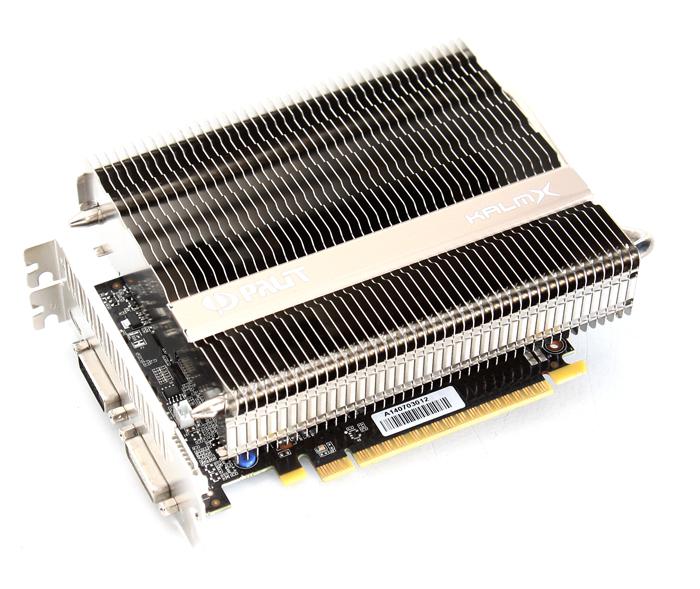Page 1
From silent to quiet with Palit KalmX GeForce GTX 750 Ti
In this review we take the Palit GeForce GTX 750 Ti KalmX. Palit's offering is the most silent of them all, as it uses passive cooling. That's right, just a big heatsink is being used. The KalmX runs reference clock frequencies and is based on a customized PCB with that new model cooler that will keep the product nicely inaudible.
Maxwell is in town, Nvidia is now slowly moving away from Kepler. The first Maxwell GPU released is the GM107, which has been baked and plastered onto the GeForce GTX 750 and 750 Ti graphics cards. Maxwell makes use of a 28nm node manufacturing process, later models however should move down to a 20nm manufacturing process. Nvidia launches two initial products today, the GeForce GTX 750 and 750 Ti. Both hover on the entry-level to mainstream level segment. As such the GeForce GTX 750 Ti will get 640 CUDA cores, 40 TMUs and 16 ROPs. These cards will be equipped with 2GB GDDR5 memory bound over a rather narrow 128-bit interface. In terms of clock frequencies, depending on brand/oem 1020 MHz will be the baseline target for the main clock frequency on the GPU while the cards can boost towards 1084 MHz. The 'standard' GeForce GTX 750 will get 512 CUDA cores, 32 TMUs and 16 ROPs, with just 1GB graphics memory though. Overall the GeForce GTX 750 and 750 Ti, as we'll demonstrate, will provide enough horsepower to step into the DX11 gaming arena at up-to 1920x1080 (Full HD) resolution. Now that doesn't mean that all modern titles will be playable with good image quality settings, let's just say that dated titles with a resolution of 1920x1080/1200 will be playable. And if you can forfeit to medium quality settings in a game and don't do any crazy stuff anti-aliasing wise, it's definitely possible to play games really nicely at FullHD with acceptable framerates.
Palit offers this 750 Ti as the factory clocked KalmX edition. As such, the core clock frequency of both products run at 1020 Mhz with the memory being factory clocked at 5400 MHz (effective data-rate). On top of the custom PCB you will spot a KalmX series cooler. Basically a big passive cooler with two nickel plated heat pipes heading towards many nickel plated fins. Heck, the card doesn't even require external power.
Have a peek at the product with the passive cooler that certainly looks and performs interestingly. And yeah, head on over to the next page where we will start up the review.


